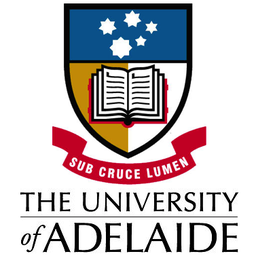Full description
Morphometric data from all genera of native Australian dung beetles (n=128) and every species of introduced dung beetle (n=25), with both data groups including both rolling and tunnelling taxa. There are more rolling than tunnelling native species (73 and 55 respectively). Of the introduced species, almost all are tunnellers (23) compared to just two rollers. Specimens were sampled from two invertebrate museum collections: the South Australian Museum (SAM) in Adelaide, South Australia, and the Australian National Insect Collection (ANIC) in Canberra, Australian Capital Territory. Across these two collections, a total of 262 specimens were measured (Table S1). Where possible, only males were selected for each species; however, this was not always an option, as sometimes only females had been collected, or the specimen was preserved in a way that did not allow for sexing of the beetle. In total, 212 males were selected, 81% of the data, alongside 35 females (13%) and 14 of unknown sex (5%).
Macrographs and measurements were acquired on a Nikon SMZ1270 stereo microscope and with a Plan Apo 0.5x/WF lens, using the software NIS-Elements (Nikon Corporation; Tokyo, Japan) at the SAM. At the ANIC, macrographs and measurements were acquired on a Leica M205C stereomicroscope and with a Leica DF500 camera, using the software Leica Application Suite 3.4 (Leica Camera; Wetzlar, Germany). A total of 27 linear measurements (measure in µm) (Table 1, Figure 1) were recorded from the live camera view for each specimen, as well as their sex (male, female, or unknown) and preservation orientation (dorsal, ventral, or both). The complete dataset can be found as supplementary material (Table S1). The order in which measurements were taken varied between specimens, as each was pinned in a unique manner, but generally began with dorsal measurements of the abdomen, pronotum, and head, followed by the limbs ventrally, and finally the depth of the tagmata (body segments). It was assumed that the left and right sides of all beetle bodies were symmetrical and therefore produced identical measurements.
Some measurements had to be adapted for select genera as follows: Head: The head height and length excluded any horns present, as these tended to be quite large and may have caused distortion of the data. Pronotum: The pronotum height and length included any ridges or horns present, as they were valid height markers and when compared to the head horns, had far less impact on the data. Abdomen: The abdomen height excluded the femora, trochanters, or coxae. Femur: The forelimb femora included the attached trochanter; mid and hindlimb femora excluded it. To keep the width consistent when measuring the femur, it was always measured at a 90o angle to the length measurement, and then the measurement repositioned to encompass the widest section of the limb. Spurs located on the hindlimb femora were exclude from the hindlimb width measurement (example, Onitis caffer). This was achieved by measuring the width of the hindlimb at a 90o angle from the base of the spur to the corresponding side of the hindlimb. Tibia: The forelimb tibiae sometimes displayed signs of tibial wear, where the tibial teeth have been worn away from use, thus producing a smaller measurement of width. This was avoided by selecting young beetles that had more pronounced tibial teeth. All tibiae were measured at their widest point, which was generally near the distal end. As with the femur, the tibia width was measured at a 90o angle to the tibia length. Spurs or hooks located on the hind or midlimb tibiae were also excluded from the measurement (example, Coptodactyla ducalis). Tarsus: The tarsus width was generally measured across the first tarsomere, as this was the widest; however, this was not always true. The tarsus length was not included if there were any tarsomeres missing. The tarsus length excluded the claws, or ungues, at the distal end of the tarsus.
These data were collected in conjunction with the Honours Thesis by A. Harvey
Comparative analysis and visualisation of shape variation between introduced and native Australian dung beetles (Scarabaeinae) completed November 2019 at University of Adelaide, School of Biological Sciences, supervised by Dr Emma Sherratt.
Issued: 2023-02-24
Created: 2023-02-24
User Contributed Tags
Login to tag this record with meaningful keywords to make it easier to discover
- DOI : 10.25909/63F85A0EABEB1



